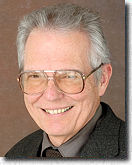 Today is the day we honor our fighting men and women, our veterans and mostly it's a day to remember and honor those who lost their lives fighting for our country and our freedom. Yet we also honor those who are still fighting. And in all fairness those who are home but are wounded physically, emotionally and spiritually. Memorial day is for remembrance.
Today is the day we honor our fighting men and women, our veterans and mostly it's a day to remember and honor those who lost their lives fighting for our country and our freedom. Yet we also honor those who are still fighting. And in all fairness those who are home but are wounded physically, emotionally and spiritually. Memorial day is for remembrance. When I was six years old I lived in Houston with my maternal grandmother. My mother, a single parent, worked in an aircraft factory in Fort Worth. It wasn't easy if your child got sick and you couldn't work. If you were late to work or missed work and didn't have a written doctor excuse for being absent you were fired. no excuses, no exceptions. It was easier just for me to live with my grandmother. I was in first grade but I'd been home with chicken pox for about a week. (That chicken pox virus came back to haunt me six years ago in the form of shingles and left me with some nerve damage.)
Ok, back to my story. One day, I was pretty much over my pox when I looked out the window and saw a yellow taxi cab pull up in our driveway. Now we lived ten miles from the city limits (at that time) in Houston on a dirt road. A taxi pulling up was an event in the 1940s but an even bigger deal if you lived out in the country. A uniformed Army soldier got out. It was my father, Sgt. Thomas L. Barrow. He was on furlough and had come to see me. Oh my goodness, I got so excited that my little pox scars turned pink and I thought my disease had returned. Thank goodness I was wrong about that.
I had a wonderful day with my dad, he spent the night with us and the next day when it was time for him to leave, my granddad and I drove with him over to the old Dallas highway and let him out. He was going to hitchhike back to Fort Worth. We sat there just watching from the car for about five or ten minutes when a car stopped for him. This was during World War II and almost everyone would pick up a soldier in uniform. It was almost un-American not to do so. That's only one of the few memories I have of my father when I was little. Since my parents were divorced when I was two years old and he was in the army serving in India and China he wasn't around. But I never forgot that day and still remember clearly that yellow taxi and how handsome my father looked in his army uniform.
Months later, my mother remarried and I went to live with her in Post, Texas. My step-father, Charles Pierce had also been in the army, serving in France and Germany, but the year was 1946 and the war was over or winding down. I remember at Thanksgiving and at Christmas my mother inviting some service men to come and have dinner with us. There was an air force base in Lubbock, forty miles away and these men came from there. I think there were two who came for Thanksgiving and two different one who came for Christmas dinner. Another time a young couple came. They had a baby girl and she was expecting another child. They'd been living on the base and were going to be alone for Thanksgiving.
When my children were about 7, 8 & 9 years old, we lived in Memphis, TN and there was a naval air force base just north of there, Millington. I invited three young men to come have Thanksgiving dinner with us. They were young men, homesick for their families and for a home-cooked meal. They enjoyed the dinner and we enjoyed having them.
Does this happen anymore? I don't know. I haven't had anyone to my house since then. But I have a feeling that people who live near a military base do something like this, at least I hope they do. It's just a small thing to open your home and heart to someone who is alone for the holidays.
Memorial Day is a special day all over our country. Not just for the mattress sales events nor the outdoor BBQs with friends or spending a day at the beach. Hundreds of towns, small and large remember. They have parades and place wreaths on graves and remember the fallen. It's a special day of reverence for everyone who has served our country, those who died and those who came home with wounds that will take years to heal.
I can only hope one day before long we won't be involved in a war. The two wars the United States have been involved in have gone on way too long. I can only hope all our troops will be home with their families soon. And I hope that a little girl or boy somewhere today can see a taxi cab or a vehicle drive up and someone in uniform gets out and looks up and smiles because they are home. I hope that child will run into a parent's arms and hold on forever and remember that feeling, for the next forty or fifty or sixty years. "You're home, Daddy, or Mommy. You're home. I love you."
That will be a Memorial Day to celebrate.























.gif)












